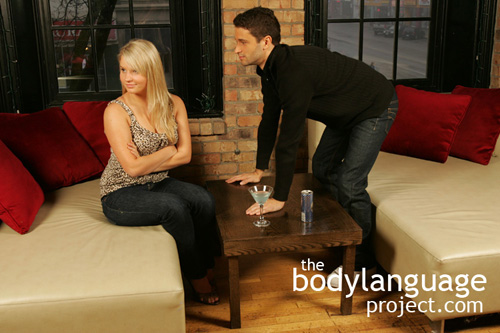It has been said that the feet are the most honest part of the body as it applies to the language they emit. Millions of years ago, we gave up quadrupedalism to walk upright leaving our feet to the dirt. While our hands busied themselves with other complex tasks like fire building, making clothing and shelters, throwing spears our legs were relegated to more primitive activities like locomotion. The hands, because of their opposable thumbs are more useful to complex tasks putting the thinking neocortex in charge. This in turn hampers honest language because the thinking mind can, within reason, eliminate the type of body language it desires.
The feet on the other hand, carried out more traditional tasks like escaping predators, avoiding hot sand or coals from the fire, leaping from slithering snakes or poisonous spiders, or navigating rough rocking river bottoms. The feet were therefore connected more to the reptilian brain which reacts to stimuli directly instead of contemplating higher order tasks that require planning. When we’re frightened it doesn’t take much to put our feet in gear by getting them tucked under our legs and coiled up, or freezing instantly or get pulled up onto a chair when startled by a mouse that catches our eye scampering across the shadows of a room. Our feet carry the flight or fight reaction to the letter, although they tend to first freeze, then take flight through distancing them from negative stimuli, and if neither is possible will begin to kick or fight. None of these tasks require high order thinking, they are based on reaction and are immediate.
The same sorts of positive reactions can be read in the feet. For example, we know that children are interested in play rather then eating when their legs bounce at the dinner table quickly trying to eat their food so they don’t miss the next inning in street ball. Even if they don’t fidget the feet will still point, or inch toward to door in effort to prepare for escape. Even the feet of adults reveal true emotions by pointing away from boring conversations or toward a lover. Adults can also be seen “Jumping for joy”, even if rarely such as when they are surprised by winnings at the casino slots, or are when met with a grandson at the airport. People of all ages can seem to float on their feet showing joy, which is an important “gravity defying” body language showing that they are excited. Young babies and toddlers, when held by a parent who’s been absent for a short while, will kick up and down and the entire body will jump with joy despite being confined in an embrace. None of a child’s body is as exuberant as their legs and feet!
It is not all that surprising that our feet go unnoticed. Our faces are complicated and at times expressive, even though we quickly learn to hide our emotions so as to deceive others. We learn early enough that when cameras are shoved in our faces, to smile, even though we have nothing to smile about or to “turn that frown upside down” when we are in a bad mood. Naturally we get good at feigning emotions with our “poker faces.” Yet throughout the years, our feet pass under the radar, tucked under tables, hidden under clothing and shoes to do menial tasks like bring us from point A to point B and back again. Our feet and legs can display boredom through repetitive motions, joy by lifting the body up and down, fear by being tucked under a chair, depression by laying lazily or motionless and sensuality by being uncovered and flaunted. The list goes on.
As you read this book pay particular attention to foot and leg language which is peppered throughout, as these will be cues that indicate true hidden meaning and emotions that is much more reliable than other body language cues.


